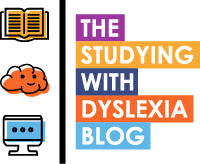Why is it that dyslexic university students get given this technology to help with studying but many schools fail to provide it, especially when it would make so much more sense to use it in secondary school to support learning?
This article is brought to you by Claro Software.
Oh my goodness, this topic just gets me so rattled!
I will try not to make this article a rant, but if you have followed this blog since it’s inception you will know how passionate I am about giving dyslexic students the help that they need to thrive through education. By levelling the playing field, a student in secondary education with dyslexia, can not only reach higher attainment but their confidence and self-esteem will be at the levels that they should be. At the very least, not affected by an education system that constantly forces these students to interact with education by playing to their weaknesses.
Assistive technology is technology that can be used to overcome the stress and anxiety of learning when dyslexic. Many may say that it is cheating and I, disrespectfully, disagree with them.
One area of assistive technology that seems to make such a huge difference to many students with dyslexia is known as ‘text to speech’ . This is essentially when written content on a screen is read out by the computer. Whilst some may be uncomfortable with listening to a more ‘robotic’ voice to read out their text, for me, I have found it to be very useful. If I have a lot of text to read, I can get very tired, very quickly and often what I read is not absorbed. Text to speech is great because I don’t need to be staring at the screen all the time. I can get up and listen to it. If I struggle with a new word I can break it down into syllables and have that read out so that I can get to know the word better. Text to speech can be used to learn new languages too by flipping between languages and learning how vocabulary should sound. If I am writing an essay and my grammar is off (resulting in lower SpaG marks) then I can listen to the grammar as the text to speech will struggle to read it out how I intended thus alerting me to my grammar mistake.
There are so many benefits and the one benefit that I am REALLY passionate about is the ability to use text to speech to read out text books. As a student I may have many text books to refer to, all of which are written often in very dyslexic un-friendly ways making reading more tiring and stressful and resulting in the information not going in. But give me that text book in PDF format, then I can get my PC to read that text book out loud. Even better, I can then carry all my text books in PDF format on a memory stick and then use them on any computer that has text to speech installed. It is a ‘no-brainer’!
So I would like to share with you two bits of information or resources that you might find helpful if you are not familiar with this aspect of assistive technology.
Number One - An example of text to speech technology.
In February, one of the leading companies that develop this type of technology will be holding a webinar showcasing how this technology can be used to read out PDF text books. Mary Wilcox from Claro Software will be giving an overview on this topic next month on the 11th February at 12:30 pm the webinar is called “How to focus on learning and not stress about reading, using technology.” This is a free webinar and I recommend attending as you will get a great overview of what this type of technology can do for dyslexic learners.
Just click the banner to register your free place.
If you can’t make the webinar…
The same webinar will be delivered in work shop format at the SEN Jigsaw Conference that is taking place in June. Assistive technology consultant, Arran Smith will give an overview on the technology from the perspective of someone who is severely dyslexic. Find out more by clicking here.
Number Two - Get free, PDF format, textbooks
Many schools do not realise that when they purchase text books, ANYONE with a ‘print disability’ (which includes any special educational need) can get a PDF copy of any textbook from the RNIB Bookshare Service. A representative of any school can simply go to the RNIB Bookshare website and register for an account and then download the text books for their students to use on any technology that can help with accessing the text more effectively.





